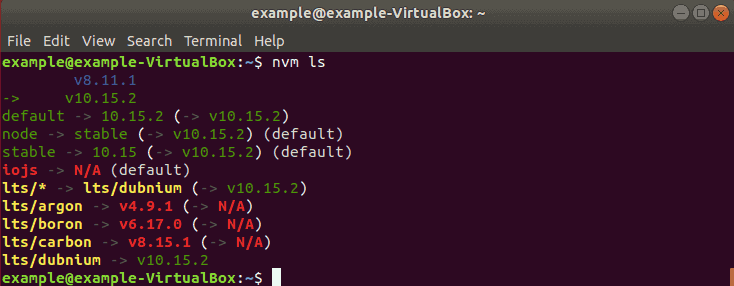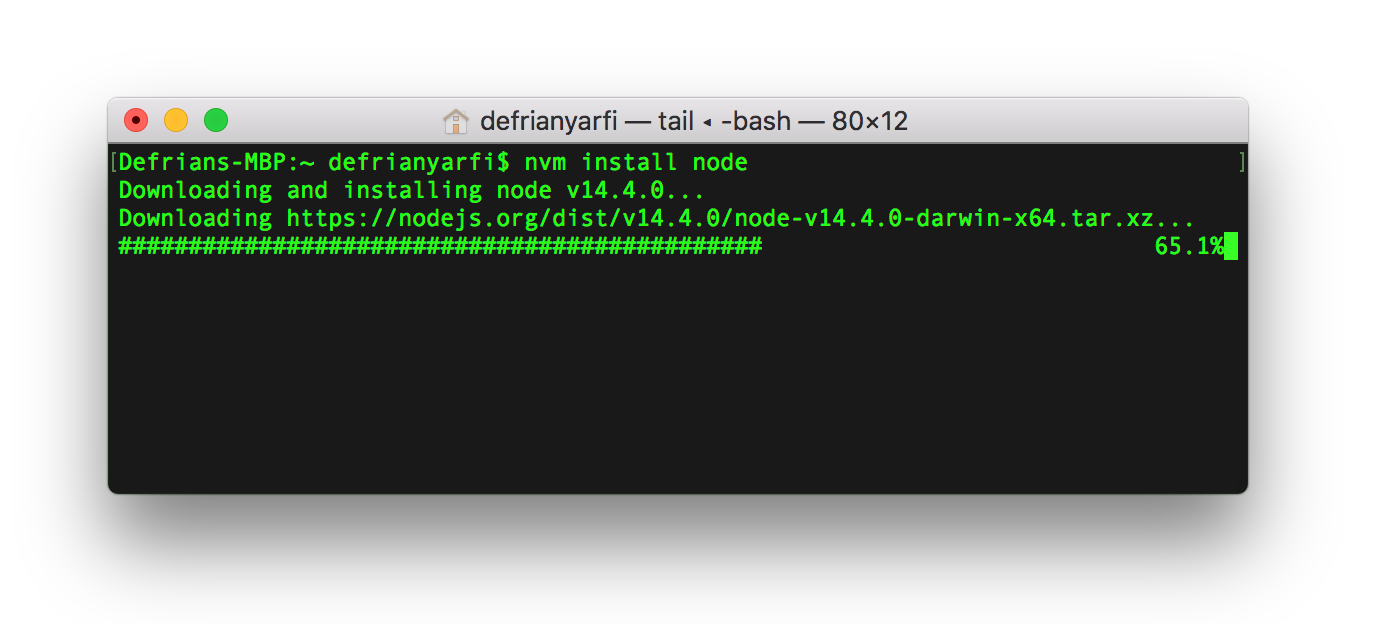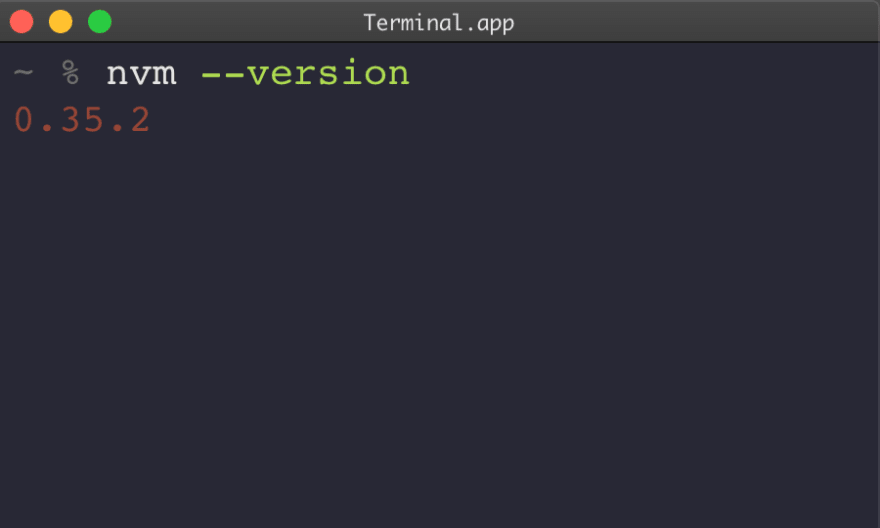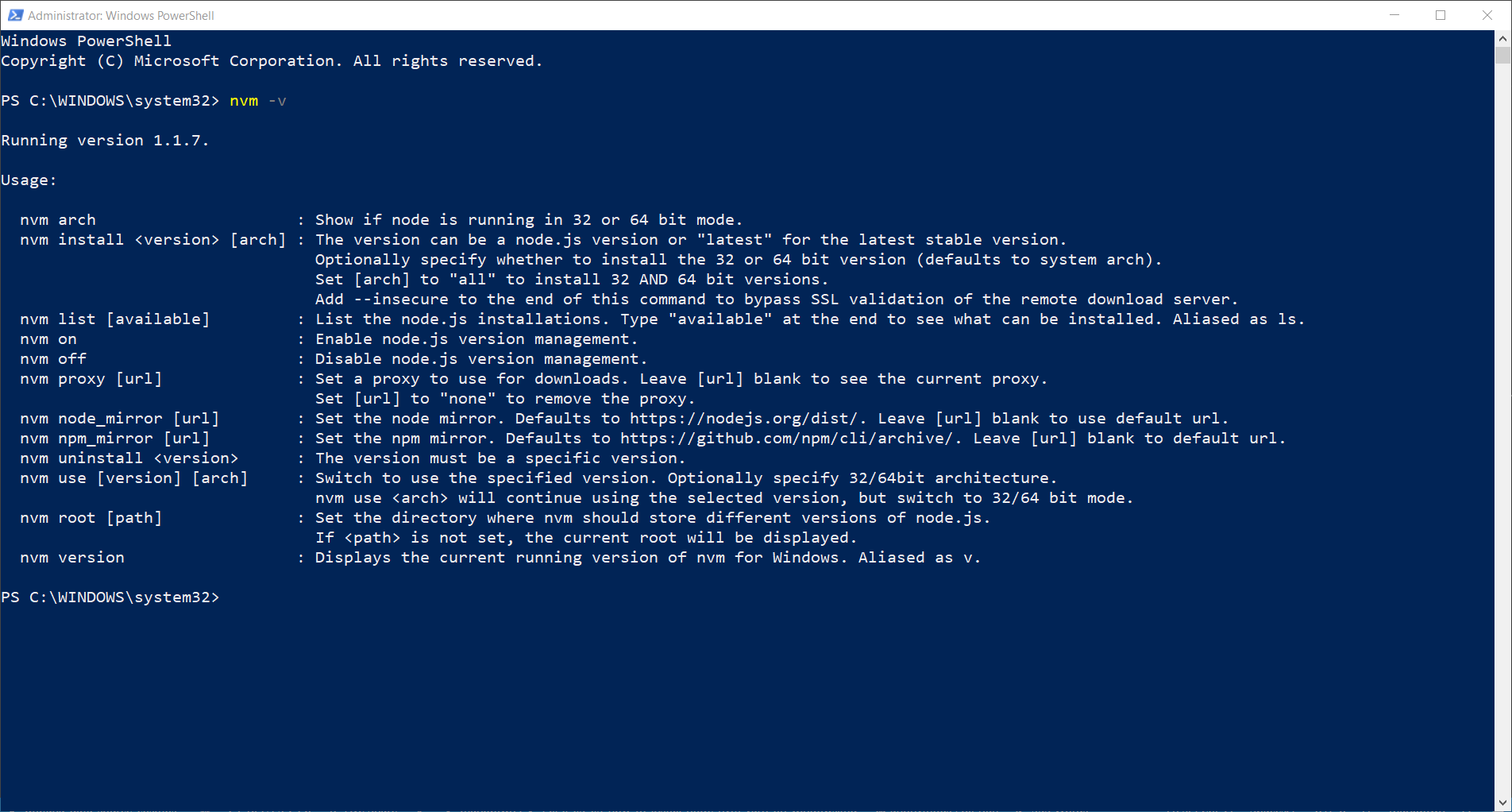
- Install the latest version of node js nvm how to#
- Install the latest version of node js nvm install#
- Install the latest version of node js nvm update#
- Install the latest version of node js nvm free#
Then the package is also one of the best tools for managing Node js in UNIX-like systems.
Install the latest version of node js nvm install#
nvm install node Using the n Package to Upgrade Node Js. nvm install 16.13.2 We can also use an alias of the latest version of Node js to upgrade to the newest version, as shown here. Like previous releases of the Ubuntu 22.04, the installation medium of the Node.js are included in the default repository of the Ubuntu 22. In this case, we are upgrading to the latest LTS version of Node js. Method 1: Installation of Node.js using the default repository of Ubuntu 22.04

Install the latest version of node js nvm how to#
How to install the Node.JS on the Ubuntu 22.04 In this write-up, we are going to explore the installation methods for the Node.js in Ubuntu 22.04 as well as discuss the basic usage of the Node.js on Ubuntu 22.04.
Node.js can be installed easily on Ubuntu 22.04 for testing or running different Javascript code. nvm install latest //installs the latest version of npm nvm install <If you loved the article and would like to support me, you can buy me a is a runtime environment designed for the execution of the Javascript codes outside the browser and it also comes with many modules to build web applications.
Install the latest version of node js nvm free#
To use a specific node version: nvm use 14.17.0įeel free to reach out to me on Twitter and connect with me on LinkedIn. You can install a specific version of node: nvm install 14.17.0 You can check all the installed versions using the following command nvm lsĬheck the version of node and npm you are running: node -version Install the latest version nvm install node Let's install the LTS and latest stable version of Nodejs, you can also choose one of those if you prefer, but believe me, it's super simple to switch between different node versions using nvm. (If you get an error command not found, restart your shell and try again.) To change your current version, simply run nvm use again, this time pointing to the newly-installed one: nvm. nvm list to get a list of the ones available in your system.

Specify a Node. Let's also install the most recent Node version, pre-aliased as latest (currently 16.11.1): nvm install latest Anytime you'd like to check your locally installed versions, run. If you restart your CLI session you need to use nvm to enable the installed node version. Switch to a specific Node.js version nvm use 8.10.0 Switch to the latest Node.js version nvm use node Switch to the latest LTS version nvm use -lts You can check which versions you have installed by running: nvm ls The entry in green, with an arrow on the left, is the current version in use. nvm ls available //windows nvm ls-remote //MacOs/Linux Install latest NodeJs version. Verify your installation using command -v nvm The node installation only applies to the current Amazon EC2 session. Get a List of all available NodeJs versions. ( Note: instead of v0.38.0 Use the latest version of nvm from GitHub) If you don't already have it, install curl sudo apt-get install curl This also means you can easily switch node and npm versions with a single command and that comes in handy. Nvm certainly has its advantages as it allows you to easily install and manage multiple node versions on your system.

In this tutorial, we will use node version manager or nvm to install and manage node versions. When you tell NVM to install Node.

Install the latest version of node js nvm update#
To update a Node Version with NVM, you have to install NVM first. NVM makes it easy to test projects across various Node versions. To install the latest available LTS version of Node.js, you can run the following command: nvm install -lts And to use that latatestTS version of Node.js in any new shell, you can simply run the use. With NVM, you can install Node versions and specify the version of Node that a project uses. nvm use -lts This will switch to the latest LTS version nvm use 14.15.3 Switches to the version v14.15.3 specifically. It looks at a master registry of all the Node.js versions that you can install. Next, to use that version of Node.js in any new shell, you can simply run the use command: nvm use node Install the latest Node.js LTS version. For switching to different versions that are already installed you can use the following commands for different scenarios: nvm use node uses latest Node.js version available on server. To install that specific version, run nvm install node-version-number. To install a specific version of Node, you need to run nvm list available first so you can see the versions of Node that are available. ( NOTE: Although this tutorial demonstrates WSL 2/Ubuntu, this installation is primarily for Linux) NVM is a console tool that manages Node.js installs for you. To install the LTS version of Node, run nvm install lts.


 0 kommentar(er)
0 kommentar(er)
